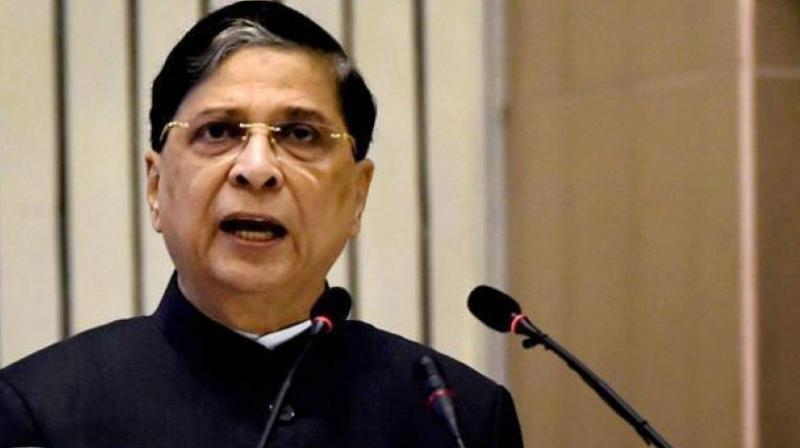Real Power with the elected government

In a majority of three judges, Chief Justice of India Dipak Misra, A K Sikri and A M Khanwilkar, the Supreme Court’s verdict in the much awaited Delhi's elected State government versus Centre appointed Lieutenant Governor, says that the LG can’t interfere into every decision of the elected government. Justice Chandrachud in his minority voice says LG is merely a titular head.
The verdict takes a middle path, tilted towards the elected government, and notes that neither authority should feel it has been lionised. Mutual respect is the key. LG must work together with the elected Council of Ministers and respect their decisions. Concurrence of LG not required in all matters. LG cannot act in a mechanical manner, and refer all decisions of the Council to the President. LG's role cannot be obstructionist. The Court must adopt an interpretation of Constitution which is in consonance with democratic principles. All three organs of State must stay rooted to Constitution. Decisions should be in consonance with the spirit of Constitution.
CJI Dipak Misra said that the L-G cannot act independently and must take advice from the Council of Ministers. The Council has to inform the L-G of its decisions. The CJI says both the state and the Union must act in harmony and enjoy a healthy relationship. Expressing disagreement over power tussle in Delhi CJI Misra said that a state fails when its Governance fails. Restoring the balance of power in the Delhi, he said that L-G Anil Baijal must not work in a mechanical manner. Thus, the SC holds that LG is bound by the aid & advice of the Council of Ministers. LG must work harmoniously & not restrict them in every which way.
Real power must lie with the elected government, said the Supreme Court, adding that the L-G not independent, and Delhi is not a full state. While the Parliament has the power to make laws for Delhi on subjects in state and concurrent list, the elected government can also make laws on all subjects expect land, police and public order. If Parliament makes a law, the executive power of the state must conform to the law made by Parliament. The Supreme Court also observed that the L-G must act on the aid and advise of the Council of Ministers to implement the President's decision. Restoring the balance of power in Delhi, CJI Dipak Misra barred L-G Anil Baijal from acting independently on state-related matters and further asked him to not to be an obstructionist. He was categorical in noting that the LG should not act in a mechanical manner and stall decisions of council of ministers, says SC. The judges also said that the lieutenant governor hasn't been entrusted with independent decision making power and that the state should enjoy freedom unsolicited interference. "Popular will can't be allowed loose its purpose," it said. Interestingly, though the judges differed on the extent of powers of the LG, they were all unanimous on the primacy of the elected government.
Conflict arose from Article 239AA & High Court ruling:
In August 2016, the Delhi High Court upheld Article 230 of the Constitution stating that the Lieutenant Governor remains the administrative head of the National Capital Territory. Under Article 239 of the Constitution, every Union Territory is under an administrator (which would be the position of a governor). The administrator governs on the directions of the president. After after amendments, under Article 239AA, Delhi was given special provisions and was deemed a National Capital Territory. According to 239 AA, the administrator of the NCT was the lieutenant-governor. The L-G, who is to be appointed by the president, will be advised by a council of ministers.
After hearing argument from both AAP government and the Centre for 15 days in over four weeks, the Supreme Court reserved its verdict on 6 December 2017 on a clutch of pleas on the issue of who enjoys supremacy in administration. Wrapping up the rejoinder submissions, in the Supreme Court during the hearings in 2017, the AAP's counsel Gopal Subramanium told the bench that the chief minister and the council of ministers had the legislative power to make laws as well as the executive authority to enforce the enacted statutes. Had that not been the intention, there was no need to frame Article 239AA (which deals with power and status of Delhi under the Constitution), Subramanium said, adding that the national capital could have also been governed by Article 239A, meant to deal with the Union Territory of Puducherry.
Immediate fallout:
Rejoicing in the AAP camp has started already as can be seen from the tweets and statements of their leaders down the line. Delhi Chief Minister Arvind Kejriwal tweeted, "A big victory for the people of Delhi. A big victory for democracy." BJP and Congress have gone silent for now. Sheila Dixit, former Delhi CM, repeated her old stand, "Delhi is not a state so both Delhi government and LG should work in tandem". And there is no official reaction from the LG either.
Interestingly, the IAS officers' forum welcomed the SC verdict. "Civil servants don't belong to any political party. They cannot exercise the discretion to prefer one party over another. The Supreme Court is the highest court of India and it has reiterated constitutional provisions. This is a victory for the Constitution and the express provisions of Article 239 AA," says K Mahesh, senior bureaucrat and president of the Delhi Administrative Officers' Academic Forum. The AAP government had alleged 'strike and non-cooperation' by the IAS officers earlier and the CM had gone on a 9-day long Sit-in Dharna in LG's house asking for his intervention to end the strike. Interesting to note that the transfer of bureaucrats will now return to the state government, though there is no word spoken on the vexed issue of Anti Corruption Bureau, taken away from the Delhi government some time back.
There are several key welfare measures pending just now: expansion of 165 Aam Aadmi Mohalla Clinics to the promised 1000 across Delhi, door-step delivery of government benefits and services to Delhi citizens (ration, birth and death certificates, etc), CCTVs in key areas and inside government buses, expansion of state government funded education infrastructure, legislation of the Jan Lokpal Bill to get an ombudsman against corruption in public offices, and also the Swarajya Bill which allows mohalla committees to decide on local development work and certify their quality and completion. It is now expected that most of these will get a strong fillip and move ahead.
Long term impact: Indirect boost to Delhi statehood agitation:
On last Sunday, July 1, Aam Aadmi Party had organized a huge rally to demand Delhi Statehood in the Indira Gandhi Stadium of Delhi, and has made it their major electoral plank in the 2019 Lok Sabha and 2020 Vidhan Sabha elections. The AAP volunteers have also embarked upon a door-to-door campaign to get one million Delhi citizens ratify the demand of statehood. This was an electoral promise of AAP in 2015, and to this end, the AAP government has passed a resolution in the state assembly calling for full statehood and passing a draft bill for the same; Kejriwal had earlier called for a keenly debated referendum in the city-state.
The draft bill passed by the AAP government in the Assembly says that Delhi being the national capital can be divided into two parts. What is commonly known as Lutyens' Delhiand is administratively governed by the NDMC Act should be under the direct control of the central government, given the sensitivities involved and the experience of national capitals world over. This resolution also notes that the rest of Delhi can no longer be denied its full statehood right. It notes that the bill introduced by then deputy prime minister and home minister, LK Advani, in the Lok Sabha on August 18, 2003, and fully endorsed by the Parliamentary Standing Committee on Home Affairs, then headed by Pranab Mukherjee, has to be the guiding document.
The current Supreme Court verdict, emboldening the role of the elected government, will indirectly fuel the movement of complete statehood of Delhi minus the New Delhi NDMC area, the seat of the Central government and international bodies and embassies.
Interestingly, the 2009 and 2014 Delhi Assembly poll manifestos of Congress and BJP also included the promise of Delhi statehood on similar lines. While Congress continued with its promise in 2015 polls too, though could not win a single seat in the Assembly, BJP changed its stance in 2015. It decided to not release a manifesto for the Delhi Assembly polls and instead released a 'vision document.' The indecision over Delhi statehood was the real reason behind the vision document.
Fundamental Constitutional questions:
The cardinal questions that AAP government's continued conflict with the Centre has thrown up are fundamental to the functioning of an electoral democracy. Does an elected government have the right to make policies and implement them? This question being decided in favour of the elected government now, the Statehood movement is bound to move ahead.
The Delhi state is governed by elected state government, nominated Lt Governor, Delhi Development Authority under LG, SDMC under Centre, all land under Central Urban Development Ministry, Delhi Police under Central Home Ministry, services of all staff under Central Home Ministry, Delhi Cantonment under Defence Ministry, and civic affairs under other Municipal Corporations. This maze of multiple agencies, with overlapping authorities as well, is a natural breeding ground for mis-governance, mis-communication, and non-cooperation stalling work.
Response of the Indian Opposition:
Interestingly, unlike the last time around during the Kejriwal dharna of the winter of 2014, this time in the summer of 2018, a plethora of regional parties, significantly SP, RJD, JDU, JDS, RLD, NCP, TMC, TDP, TRS, DMK, CPI and CPM have expressed complete support to the recent sit-in Dharna of the AAP CM on this centre-state conflict and statehood, and independence in functioning of the elected government, and the Congress is understandably seen on the same side of BJP. Congress stands stems from the fact that AAP has decimated Congress to come to power, is the major challenger of Congress in Punjab, and is focussing on building its organization bottoms-up in states which are bipolar between Congress and BJP. But, the current stoicism of Congress would rather make it suspect in the eyes of various regional parties and is not in the interests of its 2019 plans.
The Supreme Court verdict today has surely enhanced the stocks of AAP among the regional Opposition of India, and Congress will emerge the biggest loser if it is seen antagonistic to the cause of Delhi statehood.

